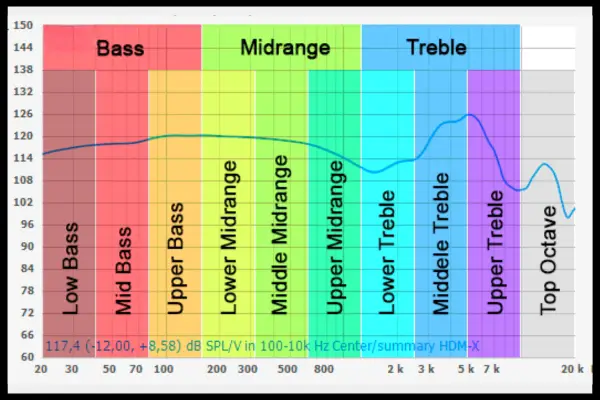What Does a Subwoofer Do?
Sound systems and their various components have shaped the way we experience audio, be it in our homes, cars, or large entertainment venues. A critical and often misunderstood part of these systems is the subwoofer. So, what does a subwoofer do?
A subwoofer is a specialized speaker designed specifically to reproduce the lowest of audible frequencies, contributing depth and richness to the overall sound. Understanding its role and function can help you appreciate the complexity and science behind the sound systems we often take for granted.
The significance of a subwoofer in a sound setup isn’t limited to music and movie enthusiasts. It’s a key element that can elevate the audio experience for any listener.
By unraveling the importance and the intricate workings of a subwoofer, this article aims to provide a comprehensive guide for those seeking to maximize their sound system’s performance. From the subwoofer’s humble beginnings to its modern-day importance, this article aims to answer the question of what exactly is a subwoofer?
Background and Definition
A subwoofer, a term first used in the 1960s, is a loudspeaker designed to reproduce low-pitched audio frequencies, known as bass and sub-bass. The frequencies typically range from 20 Hz to 200 Hz for consumer products, below 100 Hz for professional live sound, and below 80 Hz in the THX-approved systems.

Subwoofers augment the low-frequency range of loudspeakers covering higher frequency bands, creating a fuller, more powerful sound that can be both heard and felt.
They began to take shape in the 1960s when audio engineers realized that a standard speaker could not adequately reproduce the lower frequencies of music or cinematic sounds.
The first subwoofers were large, heavy, and relatively expensive, but they paved the way for the more advanced and compact versions we see today.
The evolution of subwoofers over the years has been marked by the use of advanced materials, more refined enclosure designs, and the integration of powerful amplifiers.
Today, they come in a variety of forms, from standalone units designed for home use to robust, built-in versions found in cinemas and concert venues.
Regardless of the specific type or application, the basic function of a subwoofer remains the same: to deliver powerful, low-frequency sounds that add depth and realism to our auditory experiences.
>>Take a look at our Subwoofer Reviews<<
Importance of a Subwoofer in a Sound System
The subwoofer is an indispensable component of any high-quality audio system. But what exactly does a subwoofer do to enhance your sound experience?
A subwoofer primarily reproduces the low-frequency sounds or bass, creating a sound that you can feel – a vibration or rumble that permeates the atmosphere. This sound enrichment forms the foundation of an immersive audio experience, whether it’s the subtle ambience of a movie scene or the driving bassline in a musical performance.

One key characteristic of the sounds that a subwoofer reproduces is that they are omnidirectional. This means the listener is unable to locate the source of the sound, making the subwoofer’s placement in a room less critical than other speakers.
However, a well-positioned subwoofer can optimize the sound distribution, leading to a more immersive audio experience.
The subwoofer is distinct from other components of a sound system due to its design and purpose. Standard speakers are designed to handle middle and high frequencies. They can struggle to reproduce lower frequencies accurately, leading to distortions or a lack of depth in the sound.
A subwoofer fills this gap, complementing these speakers and allowing them to focus on the frequencies they are best at reproducing. This synergy between the speakers and the subwoofer results in a more balanced and full-bodied sound.
So, what does a subwoofer do? Basically, it’s main role is to enrich the overall sound quality, providing a depth and realism that would not be achievable with regular speakers alone
Working Principle of a Subwoofer
The subwoofer works on the fundamental principles of sound and acoustics. Sound is essentially a type of energy made by vibrations. When an object vibrates, it causes movement in the air particles, which in turn move the air particles around them, carrying the pulse of the vibration through the air.
In the case of a subwoofer, the vibrations created are of low frequency, which we perceive as bass and sub-bass sounds. These low-frequency sounds are slower and have larger wavelengths than high-frequency sounds.

This is why they have the power to move large amounts of air and create the physical sensation of sound, often felt as much as heard. It’s the subwoofer’s job to create these longer, slower sound waves.
Subwoofers are composed of a few key components:
- Driver: This is the heart of the subwoofer. It’s a large-diameter speaker that produces the sound. The driver’s diaphragm moves back and forth to push air and create sound waves.
- Cabinet: This is the box that houses the driver. The cabinet can be of different types – sealed, ported, or bandpass, each influencing the sound output in unique ways.
- Amplifier: Some subwoofers (known as active or powered subwoofers) have a built-in amplifier to boost the low-frequency signals. The amplifier ensures that the driver can move enough to produce significant low-frequency sounds.
When asking, “What does a subwoofer do?”, the answer lies in its intricate process of transforming low-frequency signals from your audio source:
The driver moves in response to these signals, vibrating to create sound waves. These waves travel through the air, where they’re picked up by our ears and felt through our bodies, delivering the rich, deep sounds that we associate with a high-quality audio experience. The combination of these components and their functions is what makes a subwoofer a unique and valuable part of a sound system.
Different Types of Subwoofers
Subwoofers, in their myriad shapes and sizes, each embody a unique set of features. To comprehend what a subwoofer does in each of its forms is to gain insight that can guide you towards an informed decision when choosing the perfect subwoofer tailored to your needs.
- Passive Subwoofers: Passive subwoofers are essentially woofers or speakers housed in a box, and they require an external amplifier to function. These subwoofers are often used in custom installations where a separate amplifier can provide more flexibility and control over the audio system.
- Powered Subwoofers: These are the most common type of subwoofers used in home theater systems. They’re also known as an active subwoofer, has a built-in amplifier. The benefit of these is the convenience of having the amplifier and woofer designed to work together, resulting in efficient power use and superior sound quality.
- Vehicle or Mobile Subwoofers: Designed specifically for vehicles, these subwoofers are compact and robust. They offer powerful bass in a limited space, such as a car or truck. They can be either passive or active, but the latter is most common for ease of installation and use.
Each type of subwoofer serves a different purpose and environment. Whether you are building a home theater system, enhancing your stereo listening experience, or boosting the audio system in your vehicle, there’s a subwoofer that is right for you. By understanding the differences between these types, you can ensure you choose the right subwoofer for your specific needs and preferences.

>>Take a look at our Subwoofer Reviews<<
Choosing the Right Subwoofer
Now you know exactly what a subwoofer does, you need to make sure you find the right type to elevate your audio experience. However, the task can be daunting due to the wide variety of options available. Here are some critical factors to consider when choosing a subwoofer:
- Power: More wattage generally means more volume, but it’s not just about loudness. Power also contributes to sound quality, especially at higher volumes. Active subwoofers with built-in amplifiers are often a good choice for most users, as the amplifier is designed to work with the specific driver and enclosure for optimal performance.
- Frequency Range: The frequency range indicates how low a subwoofer can play. While a larger range doesn’t guarantee better sound, it does provide an idea of the subwoofer’s capabilities. Choosing a subwoofer with a frequency range that matches your desired audio experience is essential.
- Size and Design: Bigger subwoofers typically produce better and more resonant low-frequency sounds due to their larger drivers and cabinets. However, they also take up more space. Consider the size of your room and where you can place the subwoofer. The design and aesthetics are also important, especially for home use, as the subwoofer should ideally blend in with your room decor.
- Integration: A subwoofer needs to work in harmony with the rest of your audio system. If you have a home theater system, you might need a subwoofer that matches the rest of your speakers for a balanced sound.
Buying a subwoofer isn’t just about finding the most powerful or the biggest one. It’s about finding the one that fits best with your audio system, your space, and your listening habits. When used correctly, it can greatly enhance your overall listening experience by delivering deep, rich, and immersive low-frequency sounds.
What Does a Subwoofer Do?
What does a subwoofer do? Whether part of a home theater system, a high-quality music setup, or a vehicle’s audio system, it plays a pivotal role in creating a vibrant and immersive sound experience.
By understanding what a subwoofer does – how it produces low-frequency sounds and complements other speakers – we can fully appreciate the complexity and science behind the sound systems that we often enjoy without a second thought.
The selection of the right subwoofer, taking into account factors such as power, frequency range, size, and design, can dramatically enhance the depth and richness of our auditory experiences. As we’ve discovered, their utility isn’t limited to bassheads, as they’re essential for anyone aiming to achieve a balanced, full-bodied sound.
A subwoofer does more than just play the bass. It provides a sense of immersion and realism that other speakers simply cannot replicate, transforming audio from something we just hear to something we can genuinely feel. And don’t you just love it?

I am a passionate and skilled car audio enthusiast with 15 years of experience in the industry. My journey started when I replaced my first set of factory car speakers, sparking a deep love for high-quality sound. Since then, I have worked as a representative for renowned brands like Kenwood and Alpine.
With a background in both retail and distribution, I have developed a comprehensive understanding of the car audio market. Currently a certified (MECP) installer in the Mobile Electronics industry, my expertise lies in delivering top-notch audio installations. My knowledge, coupled with my genuine passion, makes me the go-to professional for all car audio needs.

